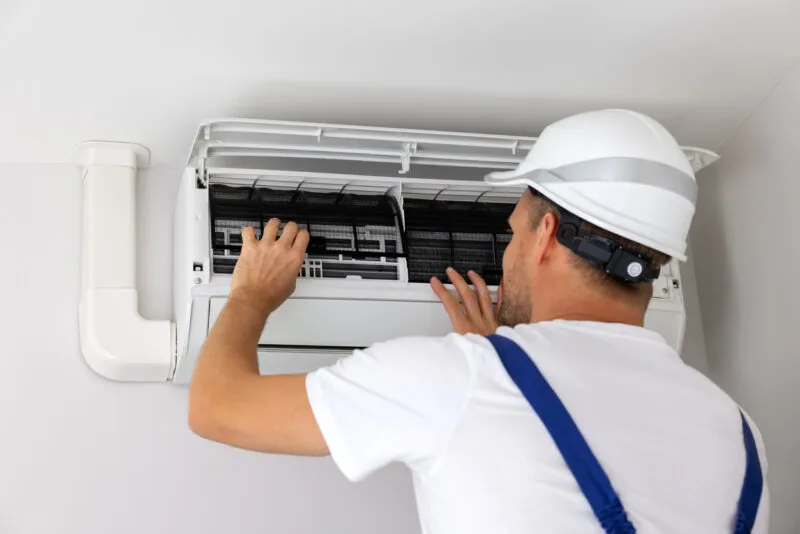Breaking Down the Components of an Air Conditioning Unit

How does an air conditioner work? While you may be familiar with air conditioners, most people don’t know the secret behind how ACs “create cold” and effectively cool your house. This lies in how the components of an air conditioning unit work together with the coolant fluid in a constant cycle of compression and expansion.
Air conditioners don’t create cold, they remove heat and the cold exists without heat. You can get a clear view of how your AC works by examining the purpose of each key component.
1. Thermostat
The thermostat is the central brain of your AC. It tells the air conditioner when to run the cooling system and the fan. Your thermostat regulates airflow and cooling, using a centrally located temperature sensor to identify when the house has reached your desired temperature and when to start cooling again.
An efficient thermostat can help you save energy, and a programmable or smart thermostat can effectively optimize cooling cycles to match your household patterns and needs.
2. Refrigerant
The refrigerant is a unique fluid that expands and compresses in a way that can move heat from one place to another. It flows through the coils of your AC system in a continual cycle. When it expands into a gas, it can absorb heat, creating cold by removing heat from the inside of the AC unit. When compressed into a liquid, it releases that heat outdoors and starts the cycle over again.
Common refrigerants include R22 and R-401A (chemical designations). R22 is considered harmful and is being phased out, but some older units still use it.
3. Evaporator Coil
The evaporator coil channels refrigerant inside your house. When the refrigerant evaporates, it absorbs heat and creates a colder space. Warm air passes over the evaporator coil, which pulls out the heat making the air cold. That cold air is then cycled through your house while the warmer refrigerant is carried outdoors to the compressor and condenser coil.
4. Condenser Coil
The condenser coil is the other half of the equation. Your refrigerant fluid absorbs heat and travels outside to the compressor. It releases heat and transforms into a liquid when compressed inside the condenser oil. A fan inside the condenser helps to expel the heat while the refrigerant returns to a liquid state, ready to start the process again.
5. Compressor
The compressor is the big noisy box that sits outside, where heat can safely be released. The compressor is the system that forcibly compresses or condenses the refrigerant and contains the condenser coil. It applies pressure through electricity to compress the refrigerant while fans remove heat from the fluid lines so the refrigerant can become liquid again.
6. Expansion Valve
The expansion valve controls just how much liquid refrigerant is allowed to flow into the evaporator coil. High-pressure refrigerant is passed into the expansion valve. The refrigerant inside the valve expands and then cools to absorb more heat inside the house.
7. Air Handler/Blower
The blower fan, also known as the air handler, is how air is pushed from the AC unit into the rest of your home. The blower fan is also responsible for air intake, drawing new warm air to pass over the coils.
In a single zone AC like a window unit or one panel in a mini-split, the blower emits air from a single vent. For homes with central air, the blower provides air pressure so cool air can reach down the ductwork to every vent in each room of the house.
Central air blowers maintain consistent and even air distribution in the building.
8. Ductwork and Vents
The final component is the ductwork, capped by vents, for homes with central air. Ducts are sealed channels for cooled (or heated) air that travel throughout your house behind the walls and ceilings. They connect the AC unit to every room in the house, where cold air emits from the vents. Clean and seal the ducts to provide the best cooling efficiency and prevent energy loss.
Your AC
Knowing how the components of an air conditioning unit work together can help you diagnose problems when they happen. Is your thermostat reading the wrong temperature? Are your ducts blowing dust despite a fresh filter? Do you suspect that your refrigerant levels are low? Knowledge is power, and being informed can help you communicate your troubles more effectively with HVAC professionals when service is needed.
For professional AC, heating, and ductwork services, call Aztil.












